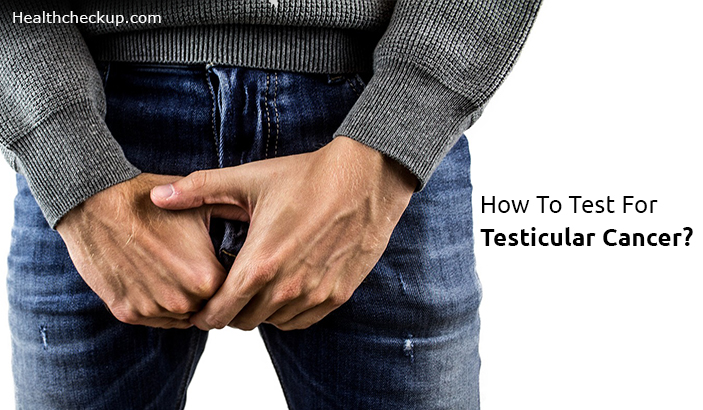Testicular cancer is the cancer of testicles. Testicular cancer test is of various types. There is no known cause, but certain factors can increase the risk of its occurrence. Pain in the abdomen and fullness or heaviness in the scrotum are few signs of testicular cancer. Diagnosis includes imaging methods, blood testing, and biopsy. For early detection, the patient should visit doctors who know how to test for testicular cancer. Treatment includes surgery, chemotherapy, and radiation therapy.
What Is Testicular Cancer?
Testicular cancer is rare cancer that occurs in the testicles. Testicles are present in males. Another type of cancer developed in men is prostate cancer, but testicular cancer and prostate cancer are different. The testicles are situated in the scrotum. The function of the testicles is to produce sperms and male hormones.
Types Of Testicular Cancer
1. Seminomas
This is a type of cancer that initiates in the germ cells. These cancers have slow growth and slow spread as compared to non-seminomas. The type of seminomas includes spermatocytic seminoma and classical seminoma.
2. Non-seminomas
These are other types of germ cell tumors.
The types of non-seminomas are;
- Embryonal carcinoma
- Teratoma
- Choriocarcinoma, and
- Yolk sac carcinoma.
3. Carcinoma In Situ Of The Testicle
It is the early stage of the germ cell tumor, which may or may not progress to invasive cancer. Also known as intratubular germ cell neoplasia, the condition can be diagnosed through biopsy.
3. Leydig Cell Tumors
This tumor initiates in the Leydig cells. Leydig cells are the cells producing male hormones. These tumors are generally benign.
4. Sertoli Cell Tumors
This tumor initiates in the Sertoli cells. Sertoli cells provide nourishment to germ cells.
Signs Of Testicular Cancer
Following are some of the signs and symptoms of testicular cancer;
- Pain in the groin or abdominal area.
- Heaviness in the scrotum.
- Changes or tenderness in the male breast tissue.
- Testicular swelling with or without pain.
- A painless lump in the testicles.
What Are The Causes Of Testicular Cancer?
There is no known cause for testicular cancer. Most testicular cancer initiates from the germ cells. However, certain factors increase the risk of testicular cancer.
How To Test For Testicular Cancer?
Following are some of the methods to diagnose testicular cancer;
1. Self-examination
The self-examination of testicles is an important step for the diagnosis of testicular cancer. If you experience any lump or swelling in your testicles, take an appointment with your doctor.
2. Physical Examination
The doctor will perform a physical examination of the abdomen, scrotum, and lymph nodes along with other symptoms to determine the presence of cancer.
3. Imaging Methods
Various imaging methods are performed to have a detailed image of testicles. The imaging techniques include ultrasound, X-ray, CT scan, MRI, and PET scan.
4. Blood Test
Testicular cancerous cells produce certain specific chemicals. These chemicals are identified in the blood as tumor markers. These include alpha-fetoprotein and human chorionic gonadotropin.
5. Biopsy
A biopsy is a process of taking a small part of the cancerous tissue and analyzing it in the laboratory.
Through proper diagnosis, the doctor may differentiate between testicular cancer and cyst.
Blood Tests For Testicular Cancer
Various tumor markers may be present in the blood of patients with testicular cancer. The levels of these markers are measured to determine the presence of a type of testicular cancer, and stage of cancer. The blood of the patient is taken through the aseptic method and analyzed in the laboratory for tumor markers.
Risk Factors Of Testicular Cancer
Risk factors for testicular cancer are;
- Family history of testicular cancer.
- A person with a medical history of cryptorchidism (a condition in which the testis does not drop before birth)
- Germ cell neoplasia in situ, which is diagnosed through biopsy usually during infertility testing.
- Testicular cancer usually occurs in people between the age of 15 years to 35 years. However, it can occur at any age.
- As compared to black men, testicular cancer is more common in white men.
Treatment For Testicular Cancer
Following are the treatment options for testicular cancer;
1. Monitoring
Routine monitoring is advised in the case of Stage 0 and sometimes in Stage 1 of testicular cancer. If the size of the lump increases or the level of hormones changes, treatment may be offered.
2. Surgery
Retroperitoneal lymph node dissection (RPLND), Orchiectomy, and Testis-sparing surgery (TSS) are various surgical procedures provided to patients suffering from testicular cancer. These are provided based on the condition of the patient.
3. Chemotherapy
Chemotherapy is generally provided when cancer spreads to other organs. Chemotherapy may be combined with surgery or radiotherapy.
4. Radiation Therapy
Surgeons use high-energy radiations to kill cancerous cells.
How To Prevent Testicular Cancer?
There is no way to prevent testicular cancer because of the absence of any factor related to testicular cancer. However, early detection results in a better prognosis and increases the chances of survival. Doctors know how to diagnose testicular cancer at an early stage, provided the patient should visit them for diagnosis.

Rohit Jain is an IPR Specialist and Medical Content Writing Expert. For over a decade, he has written several articles in the areas of female infertility, Erectile dysfunction, hemangioma, cervical cancer, monoclonal gammopathy of undetermined significance, mononucleosis, mitral valve disorder, nerve sheath tumor, shin splints, mild cognitive impairment, cellulitis, brain metastases, atelectasis, MCAD deficiency, lymphoma, sepsis, cardiac rehabilitation and metabolic disorder among others.








